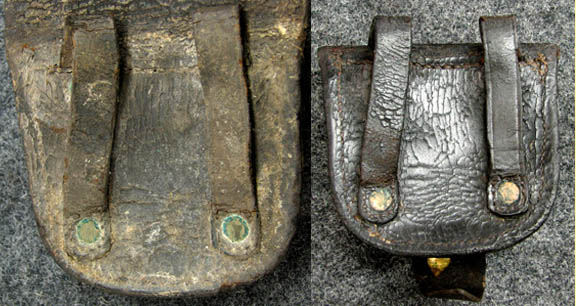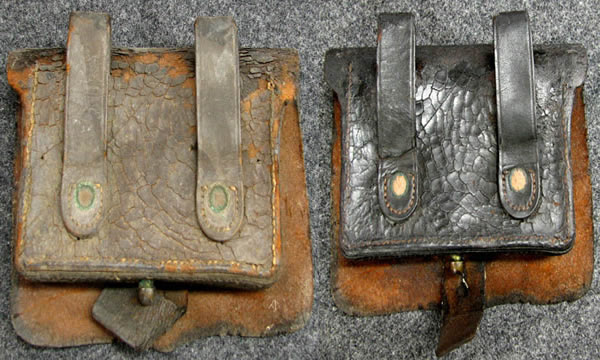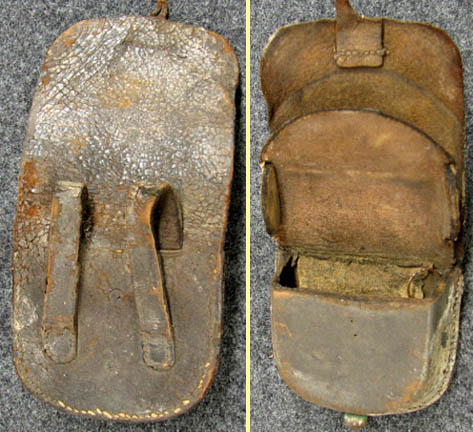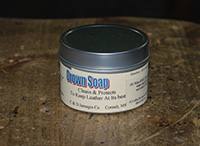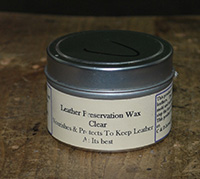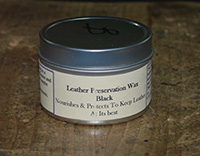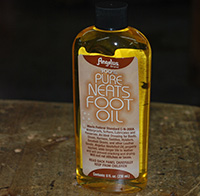caring for your leather product
The following passage from a publication called Privates’ Manual, by Major Jas A. Moss printed in 1915. This passage gives a look into the knowledge that was known by the average person and was written down in a time when this knowledge was starting to be lost, but since the army still depended on leather in its accouterments a knowledge that was required.
"Cleaning. Daily, or as often as used, leather equipment should be wiped off with a cloth slightly dampened in water, merely to remove mud, dust or other foreign substances.
At intervals of from one to four weeks, depending upon the circumstances, it is essential that the equipment be thoroughly cleaned in accordance with the following instructions.
(a) Separate all parts, unbuckle straps; remove all buckles, loops, etc., where possible.
(b) Wipe off all surface dust and mud with a damp (not wet) sponge. After rinsing out the sponge, work up a lather by moistening the sponge in clear water, squeezing it out until nearly dry, and rubbing it vigorously upon the soap. When a thick, creamy lather is obtained, thoroughly clean each piece without neglecting any portion. Each strap should be drawn its length through the lathered sponge.
(c) After the leather has been allowed to become partially dry, it should be rubbed vigorously with a soft cloth to give it the neat, healthy appearance that is desired.
How to apply oil. The quantity of oil to be used cannot be definitely prescribed. If not enough oil is used, the leather will be stiff and brittle; if too much is used, it will soil the clothing and accumulate dirt. The leather should, therefore, be saturated with sufficient oil to be soft and pliable without excess sufficient to cause it to exude. In applying the oil the following general instructions should govern:
(a) The oil should be applied to the flesh side of the equipment where practicable when the leather is clean and still damp after washing (about half dry), because it penetrates more uniformly when applied from the flesh side, and when the leather is damp. If the leather is dry it will absorb the oil like blotting paper, preventing proper distribution.
(b) The oil should be applied with an oiled rag or cotton waste by long, light, quick strokes---light strokes, so the pressure applied may not squeeze out an excess of oil; quick storks, so that the leather may not absorb an undue amount of oil. The endeavor should be to obtain a light even distribution.
(c) After applying the oil the leather equipment should be allowed to stand for 24 hours, if practicable, in a warm dry place. It should then be rubbed with a dry cloth to remove any unabsorbed oil.” [i]
This is the same way a tannery oils during the currying process and the water helps the oil penetrate the leather fibers. Oiling when dry just makes the oil fill the spaces between the fibers and does not really lubricate the fibers.
The water also keeps you from over oiling which can do as much damage as under oiling. The oil itself works on the fibers by changing the shape and the way they are backed in the leather itself. When the oil penetrates the fibers makes the fiber plump and ever so slightly grow in length. The plumping action causes the fibers to become less tightly packed and this loosening of the fibers themselves causes the leather to become softer. By over oiling this loosening of the fibers cause the leather to loose tinsel strength and makes it weaker and weaker. On the other hand if there is not enough oil to lubricate the fiber it will causes to become brittle and break or tear. So there is a fine line between on enough and too much and this is where the moisture comes in allowing you to oil enough without getting too much.
While we are looking at oil and oiling there is one other myth that I want to dispel, and that is the one that neat’s-foot oil rots the thread. This has been around for many years, but there is no truth in this one but the explanation this a little complicated. The problem that rot thread is not the oil itself but the moisture trapped in the leather by the over use of oil. I know this sounds strange but the fact is leather takes up and looses moisture all the time and this action is fine but as you add oil leather begins to loose its ability to take up and loose moisture until it gets so much oil that the moisture is just trapped. The moisture is what rots the thread but on the other hand if less oil had been used none of this would have happened. This problem is not just neat’s-foot oil but with any oil, the facts are the same. Just follow the instructions above about oiling and this problem will not happen. Oil does not make leather waterproof that is achieved with either the finish applied to the leather at the tannery or by applying a wax-based product to seal up the surface.
With all that said now I have some before and after pictures of some items that I recently worked on for a friend and used the crown soap and neat’s-foot oil and as you can see from the pictures the change was dramatic. With just a little care your leather items should last a long time.
